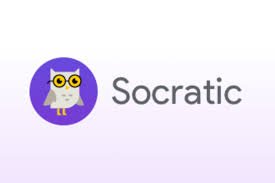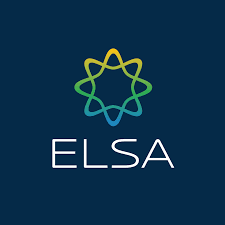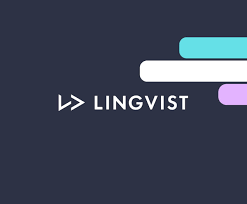The rapid advancement of artificial intelligence (AI) has revolutionized various industries, and education is no exception. Today, students have access to a wide range of Top 10+ AI App For Students that enhance learning, improve productivity, and streamline academic tasks. From homework assistance to time management, AI apps are transforming how students study, research, and organize their workload. These tools not only save time but also provide personalized learning experiences, making education more efficient and engaging.
AI apps cater to different academic needs, including writing assistance, research, coding, language learning, and even creative projects. With the rise of generative AI, students can now get instant explanations, generate study notes, and even receive feedback on their work in real time. The integration of AI in education is not about replacing traditional learning but rather supplementing it with smart tools that help students perform at their best.
In this article, we will explore the Top 10 AI App For Students across various categories. Whether you’re struggling with math problems, looking for a better way to take notes, or need help improving your writing skills, there’s an AI tool designed to assist you. By leveraging these applications, students can enhance their academic performance, reduce stress, and make the most of their study time.
AI Apps for Studying & Homework Help: The Smart Student’s Secret Weapon
The New Era of AI-Powered Learning
Gone are the days when students had to rely solely on textbooks, highlighters, and late-night library sessions. Today’s AI study tools are revolutionizing learning by providing personalized, on-demand academic support that adapts to each student’s unique needs. These intelligent platforms combine vast knowledge bases with sophisticated natural language processing to deliver explanations in multiple formats—text, visual, and even conversational—catering to different learning styles.
What makes modern AI study assistants truly remarkable is their ability to break down complex topics into digestible parts while maintaining academic rigor. They serve as patient tutors available 24/7, capable of explaining calculus concepts at 2 AM or helping structure an essay minutes before class. Unlike static educational resources, these tools engage in dialogue, asking clarifying questions to better understand where students are struggling and adjusting their explanations accordingly.
The most advanced systems now incorporate cognitive science principles, using spaced repetition algorithms to optimize memory retention and adaptive questioning to strengthen weak areas. They’re particularly transformative for students with learning differences, offering alternative explanation methods when standard approaches fail to click. This personalized, responsive support is helping democratize education by making high-quality academic assistance accessible to all students, regardless of their background or resources.
ChatGPT: The Versatile Learning Companion

OpenAI’s ChatGPT has emerged as the Swiss Army knife of academic assistance, with capabilities that extend far beyond simple Q&A:
1. Concept Explanation Across Disciplines
- Provides layered explanations (basic to advanced) based on student requests
- Creates analogies tailored to student interests (e.g., explaining physics through sports examples)
- Generates concept maps showing relationships between ideas
2. Interactive Problem Solving
- Works through multi-step problems in real-time dialogue
- Identifies where students go wrong in their reasoning
- Offers alternative solution approaches
3. Study Plan Development
- Creates personalized revision schedules based on exam dates
- Generates practice questions with varying difficulty levels
- Designs active recall exercises for better retention
4. Language Learning Support
- Role-plays conversations in target languages
- Explains grammar nuances with contextual examples
- Provides writing corrections with detailed feedback
Recent advancements allow ChatGPT to analyze and provide feedback on uploaded documents, making it particularly useful for refining thesis statements or improving lab report structure. Its new “teaching mode” walks students through topics Socratic-style, asking guiding questions rather than just providing answers—an approach proven to deepen understanding.
Google Bard: The Research Powerhouse

Google Bard stands out for its deep integration with the world’s knowledge base, offering unique academic advantages:
1. Live Research Assistance
- Synthesizes information from multiple sources into coherent overviews
- Highlights controversies or differing scholarly perspectives
- Identifies seminal papers and key researchers in any field
2. Source Evaluation
- Assesses source reliability based on publication venue, citations, and date
- Flags potential biases in referenced materials
- Suggests higher-quality alternatives when needed
3. Comparative Analysis
- Creates tables comparing theories, methods, or historical events
- Visualizes timelines of scientific discoveries or literary movements
- Outlines debates within academic disciplines
4. Writing Enhancement
- Suggests academic phrasing improvements
- Recommends discipline-specific terminology
- Helps maintain formal tone throughout papers
Bard’s newest “Research Studio” feature allows students to maintain organized, annotated collections of sources across multiple projects, with AI-generated summaries of each reference. Its ability to pull from Google Scholar and patent databases makes it indispensable for STEM researchers.
Socratic: The Homework Lifesaver

Google’s Socratic app transforms homework struggles into learning opportunities through its multisensory approach:
1. Visual Problem Solving
- Solves math problems by recognizing handwritten equations
- Annotates textbook photos with interactive explanations
- Generates step-by-step diagrams for science processes
2. Subject-Specific Support
- Chemistry: Balances equations with electron movement visuals
- Literature: Analyzes themes with quoted text evidence
- History: Creates cause-effect chains for historical events
3. Learning Reinforcement
- Follows up explanations with comprehension questions
- Links to vetted educational videos for deeper dives
- Tracks which concepts need more practice
4. Accessibility Features
- Reads questions aloud for dyslexic students
- Offers text-to-speech for all explanations
- Provides simplified language options
AI Apps for Writing & Research: The Next Generation of Academic Assistance
The Evolution of AI Writing Tools
The landscape of academic writing has undergone a dramatic transformation with the advent of sophisticated AI assistants. These tools now do far more than just correct grammar—they help students develop stronger arguments, maintain proper academic tone, avoid plagiarism, and manage complex research projects. Modern AI writing assistants combine natural language processing with machine learning to provide context-aware suggestions that adapt to different disciplines, from scientific reports to humanities essays.
What sets today’s AI writing tools apart is their ability to understand intent and style, not just syntax. They can detect when an argument lacks supporting evidence, suggest more precise vocabulary for technical writing, and even help maintain consistent terminology throughout long documents. For research, AI tools now automate the most tedious aspects of academic work—citation management, literature reviews, and source organization—freeing students to focus on analysis and critical thinking.
These innovations are particularly valuable in an era where students often struggle with academic overload. Between 40-60% of college students experience writer’s block regularly, and improper citation remains a leading cause of point deductions. AI writing assistants serve as always-available tutors that help overcome these challenges while teaching better writing practices through their feedback mechanisms.
Grammarly: The Intelligent Writing Mentor

Grammarly has evolved from a simple grammar checker to a comprehensive writing coach that analyzes documents at multiple levels:
1. Discipline-Specific Style Guidance
- Adjusts suggestions based on whether the student is writing a lab report, literary analysis, or business case study
- Recognizes field-specific conventions (e.g., passive voice acceptance in scientific writing)
- Flags informal language inappropriate for academic contexts
2. Advanced Plagiarism Prevention
- Compares text against 16 billion web pages and academic papers
- Highlights potentially problematic passages even when not exact matches
- Provides guidance on proper paraphrasing techniques
3. Rhetorical Analysis
- Evaluates argument strength by checking claim-to-evidence ratios
- Identifies logical gaps in persuasive essays
- Suggests transitional phrases to improve flow
4. Inclusive Language Checks
- Detects unconscious bias in word choice
- Recommends gender-neutral alternatives
- Flags potentially offensive terminology
For English language learners, Grammarly’s tone detector is particularly valuable, helping students navigate the nuances of academic register that often differ from conversational English. The “Goals” feature allows customization for different assignment types, ensuring feedback aligns with professor expectations.
QuillBot: The Research Accelerator

QuillBot’s suite of tools addresses three critical research writing challenges: efficient source integration, comprehension of complex texts, and maintaining original voice while incorporating references.
AI-Powered Workflows:
1. Smart Paraphrasing
- Seven rewriting modes (Formal, Academic, Simple, etc.)
- Sentence-level and paragraph-level restructuring
- Preservation of technical terms while altering sentence structure
- Side-by-side comparison with original text
2. Summarization Engine
- Key point extraction from research papers
- Adjustable summary length (1 sentence to 5 paragraphs)
- Concept mapping for visual learners
- Citation generation for summarized content
3. Research Co-Pilot
- Browser extension that summarizes online articles in real-time
- Integration with Google Docs and Microsoft Word
- Team collaboration features for group papers
4. Translation & Language Enhancement
- Academic-level translation between 30+ languages
- Idiom correction for non-native speakers
- Consistency checking across long documents
Jenni ai: The Academic Writing Partner

Jenni.ai represents the cutting edge of AI-assisted composition, acting less like a tool and more like a writing partner that grows with the student’s project.
Key Features:
1. Intelligent Outlining
- Transforms rough ideas into structured outlines
- Suggests logical section ordering
- Recommends heading hierarchies based on paper length
2. Context-Aware Content Generation
- Drafts paragraphs based on student notes and sources
- Maintains consistent style throughout document
- Adapts to preferred citation style (APA, MLA, etc.)
3. Citation Automation
- Generates in-text citations from uploaded PDFs
- Creates properly formatted reference lists
- Verifies citation accuracy against style guides
4. Academic Integrity Safeguards
- Originality scoring during drafting
- Flagging of potentially problematic phrasing
- Guidance on proper source attribution
What sets Jenni apart is its ability to work iteratively—students can mark sections as “needs improvement” and receive specific revision suggestions, or use the “Expand” feature to develop underdeveloped arguments with evidence-based content.
Zotero: The Research Powerhouse

Zotero has integrated AI to transform from a reference manager to a complete research ecosystem:
Advanced Capabilities:
1. Smart Source Organization
- Automatic tagging by research topic
- Relationship mapping between sources
- Duplicate detection and merging
2. AI-Assisted Literature Review
- Identifies seminal papers in a field
- Visualizes research timelines
- Highlights gaps in collected sources
3. Automated Citation Intelligence
- Corrects common citation errors
- Handles unusual source types (conference proceedings, patents)
- Generates annotated bibliographies
4. Collaborative Features
- Shared library version control
- Team annotation system
- Access control for group projects
Zotero’s new AI suggest feature can recommend additional relevant sources based on a student’s existing collection, essentially acting as a research assistant that grows more attuned to the project’s needs over time.
Emerging Trends in AI Writing Assistance
The next generation of tools shows even greater promise:
- Argument Visualization – AI that diagrams paper structure to show logical flow
- Peer Review Simulation – Predicting how professors might evaluate work
- Multimodal Research – Combining text analysis with image/figure suggestions
- Draft Optimization – Rewriting papers to match specific journal styles
- Real-Time Collaboration AI – Mediating group writing dynamics
These tools aren’t replacing human critical thinking—they’re augmenting it. By handling mechanical aspects of writing and research, they allow students to focus on developing original ideas and deeper analysis. Properly used, they serve as always-available tutors that help students internalize better writing practices over time.
For today’s students, mastering these AI writing assistants is becoming as fundamental as learning library research skills was for previous generations. The most successful students will be those who learn to leverage these tools judiciously—using them to enhance rather than replace their own critical engagement with academic work.
In the whirlwind of academic life, students juggle lectures, assignments, group projects, extracurriculars, and personal commitments—often feeling like there simply aren’t enough hours in the day. This is where AI-powered productivity tools are revolutionizing student life by acting as intelligent personal assistants that organize, prioritize, and even automate key aspects of academic workflow. These tools go far beyond simple calendar apps, employing sophisticated algorithms to understand individual work patterns, predict time requirements, and suggest optimized schedules.
Notion AI: The All-in-One Intelligent Workspace

Notion has evolved from a versatile organizational tool into an AI-powered command center for student life with its integrated AI features. The platform now serves as a dynamic hub where notes, tasks, databases, and schedules interact intelligently to support the entire academic workflow.
Tome: The AI Presentation Architect

Tome represents a quantum leap in presentation creation, transforming how students approach visual assignments and public speaking requirements. This tool eliminates the frustrating “blank slide” syndrome by providing intelligent starting points that students can refine rather than creating from scratch.
AI-Powered Workflow:
- Content Structuring
- Generates logical narrative flows from rough outlines or even scattered notes
- Suggests persuasive argument structures for debate presentations
- Automatically balances text and visual elements for maximum impact
- Smart Visual Curation
- Recommends relevant charts, graphs, and images based on content
- Creates custom diagrams to explain complex processes
- Maintains consistent styling across all slides
- Dynamic Speaker Support
- Generates speaker notes with timing estimates
- Creates audience Q&A anticipation points
- Suggests verbal transitions between slides
- Collaboration Features
- Tracks team member contributions in group projects
- Highlights sections needing more research or refinement
- Maintains version history with AI-generated change summaries
AI Apps for Language Learning: Revolutionizing How Students Master New Languages
In today’s interconnected world, language skills have become more valuable than ever. Artificial intelligence is transforming language education by providing personalized, interactive, and adaptive learning experiences that traditional classroom settings often can’t match. AI-powered language apps now offer students the ability to practice anytime, anywhere, with instant feedback and customized lesson plans tailored to their individual progress and learning styles.
Duolingo Max: The Next Generation of AI-Powered Language Learning

Duolingo has long been a leader in language education technology, and their Duolingo Max subscription takes the experience to new heights with advanced AI features. The platform’s integration of OpenAI’s GPT-4 enables two groundbreaking features: “Explain My Answer” and “Roleplay.”
ELSA Speak: Perfecting Pronunciation with AI Speech Analysis

While many language apps focus on vocabulary and grammar, ELSA (English Language Speech Assistant) specializes in one of the most challenging aspects of language learning: pronunciation. Using proprietary speech recognition technology trained on thousands of native speaker accents, ELSA provides instant, precise feedback on pronunciation errors that most human ears would miss.
Lingvist: The Vocabulary Mastery System Powered by AI

Lingvist takes a data-driven, efficiency-focused approach to language learning with its AI that constantly adapts to each student’s knowledge level. The platform’s algorithms are based on scientific research about memory retention and vocabulary acquisition, optimizing the learning process to help students build practical language skills in the shortest time possible.
Emerging Trends in AI Language Learning Technology
The next generation of AI language apps is pushing boundaries even further with several exciting developments:
- Multimodal AI Tutors: Apps combining speech recognition, computer vision (for reading body language), and natural language processing to create fully immersive conversation partners that respond to verbal and non-verbal cues.
- Augmented Reality Language Learning: Using smartphone cameras to label real-world objects in the target language, creating spontaneous vocabulary lessons from a student’s immediate environment.
- Emotional AI: Systems that detect frustration or confusion from a student’s voice patterns and automatically adjust lesson difficulty or provide encouragement.
AI Apps for Coding & STEM Students: Revolutionizing Technical Education
For students pursuing computer science, engineering, and other STEM disciplines, mastering complex coding languages, debugging errors, and solving advanced mathematical problems can be daunting. Fortunately, AI-powered tools are transforming how students learn and apply technical concepts by providing real-time assistance, personalized feedback, and automated problem-solving. These tools not only enhance productivity but also serve as virtual tutors, helping students grasp difficult topics more efficiently.
Below, we dive deeper into some of the most powerful AI apps for coding and STEM students, exploring their features, benefits, and real-world applications in academic and project-based learning.
GitHub Copilot: The AI Pair Programmer

Overview:
GitHub Copilot, developed by GitHub in collaboration with OpenAI, is an AI-powered coding assistant that integrates directly into popular code editors like Visual Studio Code. It functions as a “pair programmer,” offering real-time code suggestions, auto-completion, and even entire function generation based on natural language comments or existing code.
Symbolab: The AI Math Tutor

Overview
Symbolab is an AI-powered computational engine that solves mathematical problems step-by-step, from basic algebra to advanced differential equations. It’s particularly useful for STEM students who need detailed explanations rather than just answers.
AI Apps for Creativity & Design
Canva AI simplifies graphic design by generating templates, resizing images, and suggesting color schemes. Students can create professional-looking presentations, posters, and social media content effortlessly.

Runway ML offers AI-powered video editing features, such as automatic background removal and style transfer. Film and media students can use it to enhance their projects without advanced editing skills.

Conclusion
The integration of AI into education has opened up endless possibilities for students. From simplifying homework to enhancing creativity, AI apps provide personalized, efficient, and innovative solutions that cater to diverse learning needs. These tools not only save time but also empower students to take control of their education by offering instant assistance and feedback.
While AI cannot replace traditional learning methods, it serves as a powerful supplement that enhances comprehension, organization, and productivity. Students who embrace these technologies gain a competitive edge, allowing them to focus on deeper understanding rather than repetitive tasks. The key is to experiment with different tools and find the ones that best align with individual learning styles.
As AI continues to evolve, its role in education will only expand, offering even more advanced features to support students. By staying updated with the latest AI applications, students can maximize their academic potential and prepare for a future where technology and learning go hand in hand. The right AI tools can make education more accessible, engaging, and effective—transforming the way students learn, create, and succeed.






